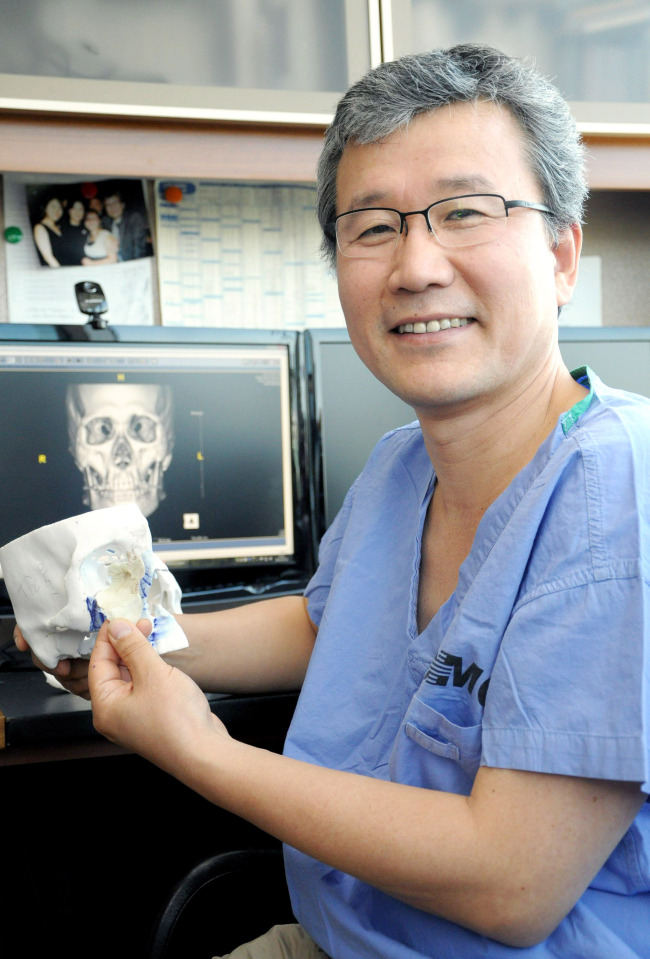Samsung conducts Korea’s first surgery using 3-D printing
By Korea HeraldPublished : May 21, 2013 - 20:24
Samsung Medical Center said Tuesday its doctors successfully utilized 3-D printing technology for cancer surgery for the first time in Korea.
Three-dimensional printing uses materials such as plastic or metal to create a three-dimensional object based on a digital model.
Baek Chung-hwan, an otolaryngologist at the nation’s top medical institution, said that his team performed surgeries to remove nasal cavity cancer from two patients in April and May, respectively. The patients left the hospital in good health.
Three-dimensional printing uses materials such as plastic or metal to create a three-dimensional object based on a digital model.
Baek Chung-hwan, an otolaryngologist at the nation’s top medical institution, said that his team performed surgeries to remove nasal cavity cancer from two patients in April and May, respectively. The patients left the hospital in good health.

Nasal cavity cancer requires the removal of the affected facial bones and tissues, which are replaced with muscles and bones from other body parts to support the facial structure.
The conventional method incorporates CT imagery, but it is difficult for doctors to accurately identify the facial structure with an image alone. This can cause misalignment during the procedure. Also, the graft material changes shape with time, causing the areas around the eye to sink.
Baek provided the patients’ CT imagery to a company that makes 3-D teeth models. Using a 3-D printer, they created a model of the surgery area. With the model, the team identified the exact scope of surgery, bone thickness and incision direction in real-time during the surgery. The model also allowed exact reconstruction of the removed area, and helped them precisely shape the prosthetic.
Currently, the technology is widely used in dentistry for implants but not for surgery.
“In the future, biological tissue may be used as 3-D printer material. ‘Bioprinting’ will allow us to create organs and tissues at will,” Baek said.
Three-dimensional printing has already been used for extensive facial reconstruction surgery in the U.K in April. The U.S. conducted a skull implant surgery in March using the technology.
By Lee Sang-ju (sjlee370@heraldcorp.com)
-
Articles by Korea Herald











![[Today’s K-pop] BTS pop-up event to come to Seoul](http://res.heraldm.com/phpwas/restmb_idxmake.php?idx=644&simg=/content/image/2024/04/17/20240417050734_0.jpg&u=)





![[KH Explains] Hyundai's full hybrid edge to pay off amid slow transition to pure EVs](http://res.heraldm.com/phpwas/restmb_idxmake.php?idx=652&simg=/content/image/2024/04/18/20240418050645_0.jpg&u=20240419100350)

![[Today’s K-pop] Zico drops snippet of collaboration with Jennie](http://res.heraldm.com/phpwas/restmb_idxmake.php?idx=642&simg=/content/image/2024/04/18/20240418050702_0.jpg&u=)